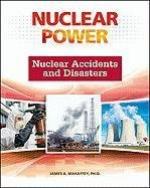|
This section contains 918 words (approx. 4 pages at 300 words per page) |

|
Beginning in the 1920s, a number of clock making companies began to offer glow-in-the-dark products. Watch dials, clock faces, automobile dash-board gauges, and airplane instrument panels were made luminescent by adding the radioactive element radium to paint. To fashion neat num- bers, the mostly young women who worked in these factories were encouraged to occasionally "sharpen" their brushes with their lips and teeth. The workers were thus ingesting deadly radium. Years later these women experienced a high incidence of jawbone deterioration and fatal cancers of the head and neck. Researchers have studied their lives to learn more about the long-term health effects of radiation exposure.
Ross Mullner, author of Deadly Glow: The Radium Dial Worker Tragedy, notes that the federal government passed a number of safety regulations in the aftermath of these accidental radium exposures. Occupational laws now protect workers involved in various aspects...
|
This section contains 918 words (approx. 4 pages at 300 words per page) |

|




